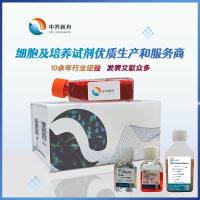Blood–brain barrier (BBB) constituted primarily by the capillary endothelial cells functions to maintain a constant environment for the brain, by preventing or slowing down the passage of a variety of blood-borne substances, such as serum proteins, chemical compounds, ions, and hormones from the circulation into the brain parenchyma. Various diseases such as brain tumors, epilepsy, and sepsis disturb the BBB integrity leading to enhanced permeability of brain microvessels. In animal models, a variety of experimental insults targeted to the BBB integrity have been shown to increase BBB permeability causing enhanced passage of molecules into the brain paranchyma by transcellular and/or paracellular pathways. This alteration can be demonstrated by intravascular infusion of exogenous tracers and subsequent detection of extravasated molecules in the brain tissue. A number of exogenous BBB tracers are available, and they can be used for functional and structural analysis of BBB permeability. In this chapter, we aimed to highlight the basic knowledge on the use of three most commonly performed tracers, namely Evans blue dye, sodium fluorescein, and horseradish peroxidase. The experimental methodologies that we use in our laboratory for the detection of these tracers by macroscopy, spectrophotometry, spectrophotofluorometry, and electron microscopy are also discussed. While tracing studies at the morphological level are mainly aimed at the identification and characterization of the tracers both in the barrier related cells and brain parenchyma, spectrophotometric and spectrophotofluorometric assays enable quantification of BBB permeability. The results of our studies that we performed using the mentioned tracers indicate that barrier type of endothelial cells in brain play an important role in paracellular and/or transcytoplasmic trafficking of macromolecules across BBB under various experimental settings, which may provide new insights in both designing approaches for the management of diseases with BBB breakdown and developing novel trans-BBB drug delivery strategies.






